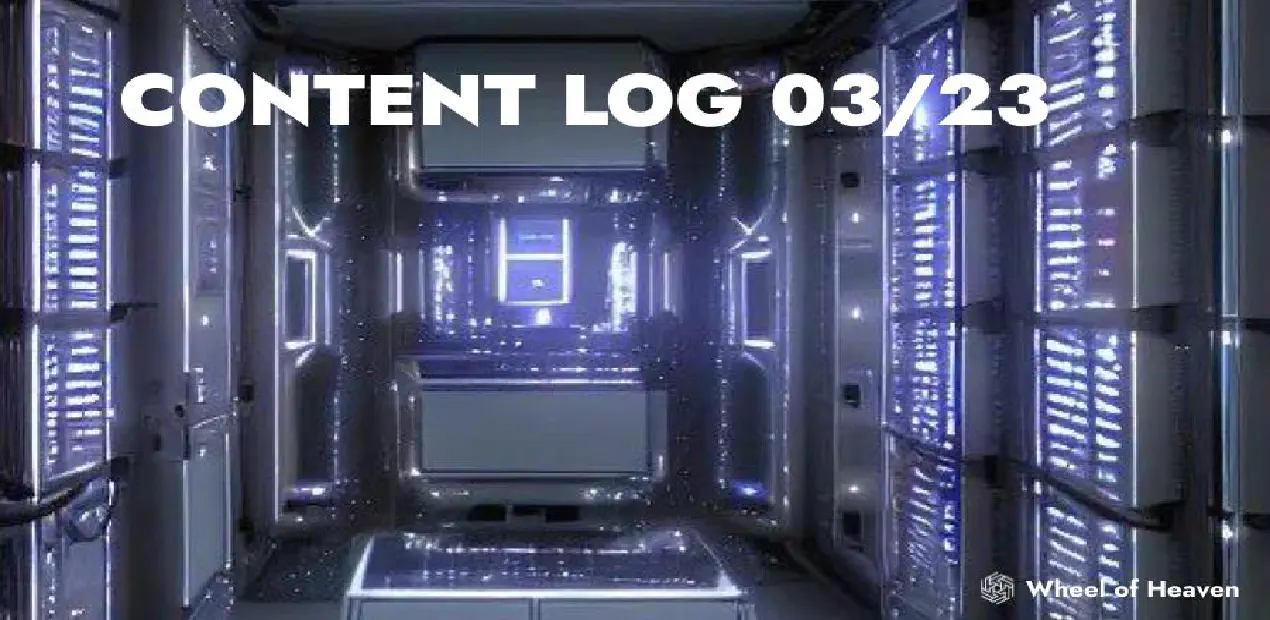Roadmap after first year since launch
Posted in behind-the-scenes on October 1, 2023 by Zara Zinsfuss ‐ 7 min read

The inception of this website traces back to last year’s autumn equinox. I was perched in a rooftop bar in Jerusalem, with the Old City stretching out before me in the east. From that moment to now, the content has burgeoned remarkably. I’ve dedicated considerable effort to refining the user experience of the site, and the wiki has been meticulously curated, almost to the limits of what a single maintainer can achieve. I’m optimistic that as the site garners more attention, others will join in, bringing their unique skills and knowledge to the table.
I’d like to shed light on the envisioned trajectory for the website. My penchant has always leaned towards an encyclopedic presentation of information. It’s paramount that complete transparency is maintained about the origins of the information. This empowers the reader to gauge the relevance and credibility of the information they encounter. This philosophy has been instrumental in shaping the content architecture of the website, from the introduction to the wiki, resources, and beyond.
236'000 parasangs
I am mentioning this, because very recently, I was researching an intriguing passage from the Raëlian canon, namely where the canonicity of the Jewish Kabbalah was confirmed and a quote was provided which shows that the Kabbalah makes references to astronomical measurements, therefore implying that the scriptures are indeed alluding to being from a different solar system.
‘It is not only in the Bible and the Gospels that there are traces of the truth; testimonies can be found in practically every religion. The Kabala especially is one of the richest in testimonies, but it would not have been easy for you to get hold of one.
If one day you can find a copy, then you will be able to see that there are a great number of allusions to us. Particularly noteworthy is a description in the Canticle of Canticles (5) of the creators’ planet and the distance which separates it from Earth.
It is written that the “height of the creator” is 236,000 “parasangs”, and that “the height of his heels” is 30,000,000 “parasangs”.
This lead me to an article by the Jewish Virtual Library, a web repository of Jewish knowledge written in an encyclopedic format (something that we try to emulate here on Wheel of Heaven as well), titled “Shi’ur Qomah” (Hebrew שיעור קומה for the measure of the body [of god]). Therein, the height of the Creator is given as 236'000 parasangs, the number itself being based on a numerological interpretation from another Biblical passage, Psalm 147:5. There I had found my first clue this highly specific number had indeed been part of the Jewish Biblical exegesis and that the reference was obscure enough to acknowledge the unlikelihood of some uninitiated outsider (Raël) to have randomly picked up the signifance to weave together a new religious narrative out of thin air. Ultimately, this route of research led to a set of insights I will share here on Wheel of Heaven at a later point in time, once I have compiled it all together and written down the whole reasoning behind my research.
What was more interesting actually, and that’s where we join together where Wheel of Heaven as a whole should be heading towards to in the future is the website that the Jewish Virtual Library was linking to when it came to its Biblical passages. These links resolved to a website I was up to that point totally unaware of. The real revelation was this hyperlink from the Jewish Virtual Library that introduced me to a previously unknown gem: Sefaria. Now, let me tell you one or two things about Sefaria.
Sefaria in a nutshell
Sefaria (www.sefaria.org) is a free online platform that offers an extensive collection of Jewish texts, both in their original languages and in translation. It stands out for its interlinked structure, allowing users to navigate seamlessly between primary texts and their commentaries. Beyond just being a repository, Sefaria encourages interactive learning. Users can annotate texts, create thematic source sheets, and even contribute translations. With its open-source model and a commitment to community engagement, Sefaria serves as a digital hub for Jewish scholarship, making it an invaluable resource for anyone delving into Jewish studies.
It got founded in 2011 by journalist Joshua Foer and Brett Lockspeiser, a former Google project manager. Envisioned as a “living library of Jewish texts,” the platform is open-source and relies on volunteers to contribute texts and translations. It offers a unique interconnected structure, linking various texts and providing them in their original languages, such as Hebrew, Aramaic, and Judeo-Arabic, alongside translations. Beyond its vast collection, Sefaria offers tools for users to create source sheets. The platform is overseen by a non-profit organization, employing a team of 18 engineers. By 2019, it attracted 250,000 unique visitors each month. The name “Sefaria” is inspired by the Hebrew words for “book” (sefer) and “library” (sifria). Over the years, Sefaria has expanded its offerings, including a major redesign in 2016, the release of significant texts like the William Davidson Talmud in 2017, and a pilot program in 2020 to incorporate secular works.
It is precisely the last part that was so inspiring for me to consider, namely that this style of providing information can obviously be applied to any body of knowledge. In a way, the purpose of Wheel of Heaven is very similar in its goal-setting and tries to achieve to make a body of information as accessible as possible. Perhaps, cynics could argue that Sefaria at least is doing this for a valid field of research, Jewish scriptures, and Wheel of Heaven taps more into pseudoscientific realms, but in my opinion, this is secondary as what matters is that information independent of apparent value should always be provided in a transparent and traceable way.
A similar goal
As I delved deeper into the intricacies of Sefaria, I couldn’t help but be captivated by its richness of content and highly user-friendly design. The platform’s seamless integration of vast textual repositories of ancient scriptures, parts of which have been quite difficult to get one’s hands on such an interlinear translation of the Talmud or even the Zohar, with the ability to switch language, as well as the specific translational work for a given language (and get this, even in Esperanto!) on the fly offers a unparalleled way of navigating the sheer amount of pages of ancient Hebraic scriptures with ease. I’ve honestly never found anything as uncumbersome to use. Sefaria truly reached new heights in terms of digital library software.
As already hinted at, one of the standout features in Sefaria is its interlinked structure. For a large amount of the scriptures available, an interlinear translation can be toggled on. Furthermore, every text, every commentary, every word is connected, allowing users to traverse layers of knowledge with just a click in the sense that personal notes can be read and third-party references are natively integrated into the reader view. This interconnected web not only aids in contextual understanding but also fosters a sense of exploration. For Wheel of Heaven, adopting a similar approach could revolutionize how users interact with content. Imagine a user reading about an esoteric concept and having the ability to instantly access related texts, interpretations, and discussions, all within the same ecosystem. Moreover, Sefaria’s annotation tools, which allow users to add personal insights, create thematic source sheets, and contribute translations, are a testament to the platform’s commitment to collaborative learning. Integrating similar tools into Wheel of Heaven could transform it from a mere repository to a vibrant community of seekers and scholars, collectively enhancing the body of knowledge.
Another noteworthy aspect of Sefaria, one that is being shared with Wheel of Heaven and that we can be proud of, is its open-source model. This democratization of code and content encourages community participation, ensuring that the platform remains dynamic and ever-evolving. For Wheel of Heaven, embracing a similar open-source ethos could catalyze community-driven enhancements, leading to a richer and more diverse content landscape.
It seems to me that now that I’m looking back to the last twelve months of development and content curation, Sefaria may very well serve as a beacon for the roadmap up ahead. As Wheel of Heaven continues its journey, drawing inspiration from such a pioneering platform will undoubtedly steer it towards becoming a digital sanctuary for its unique body of knowledge.

